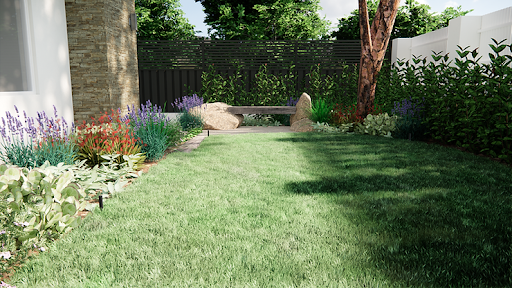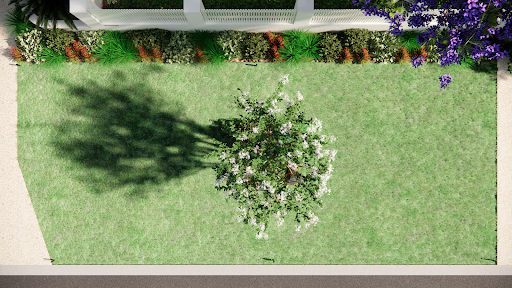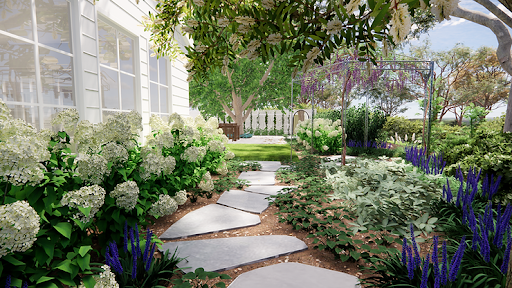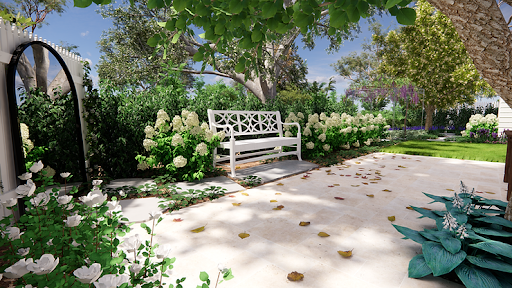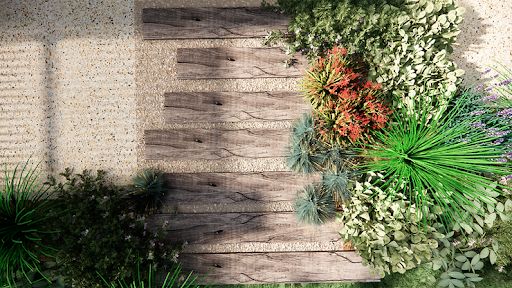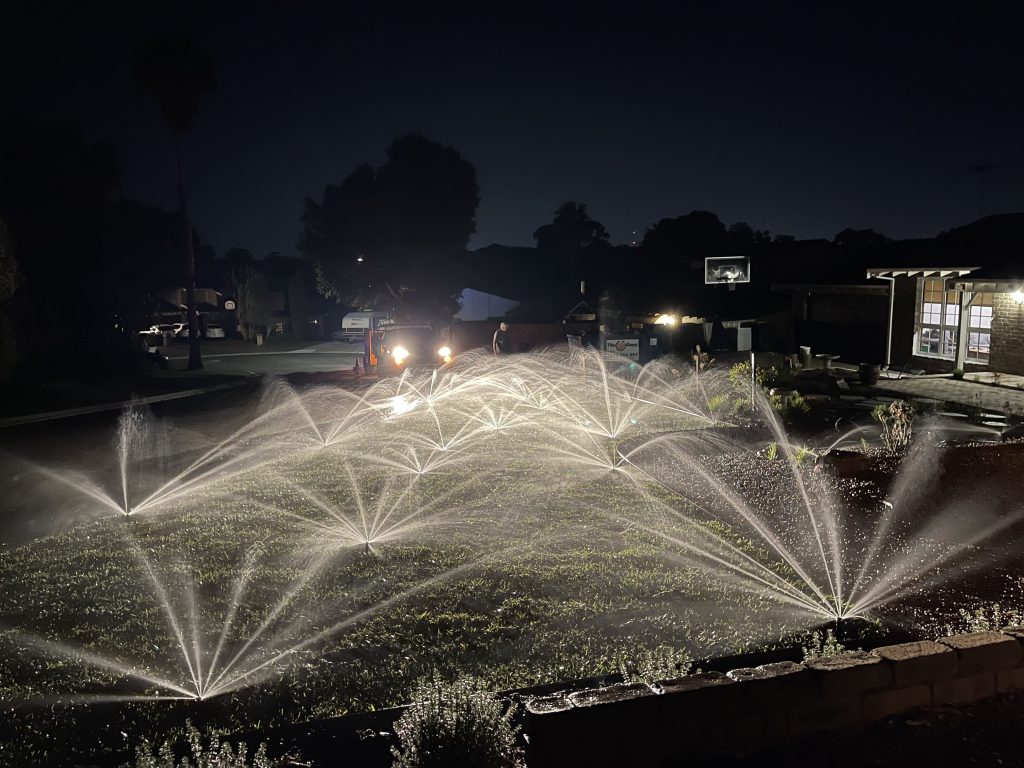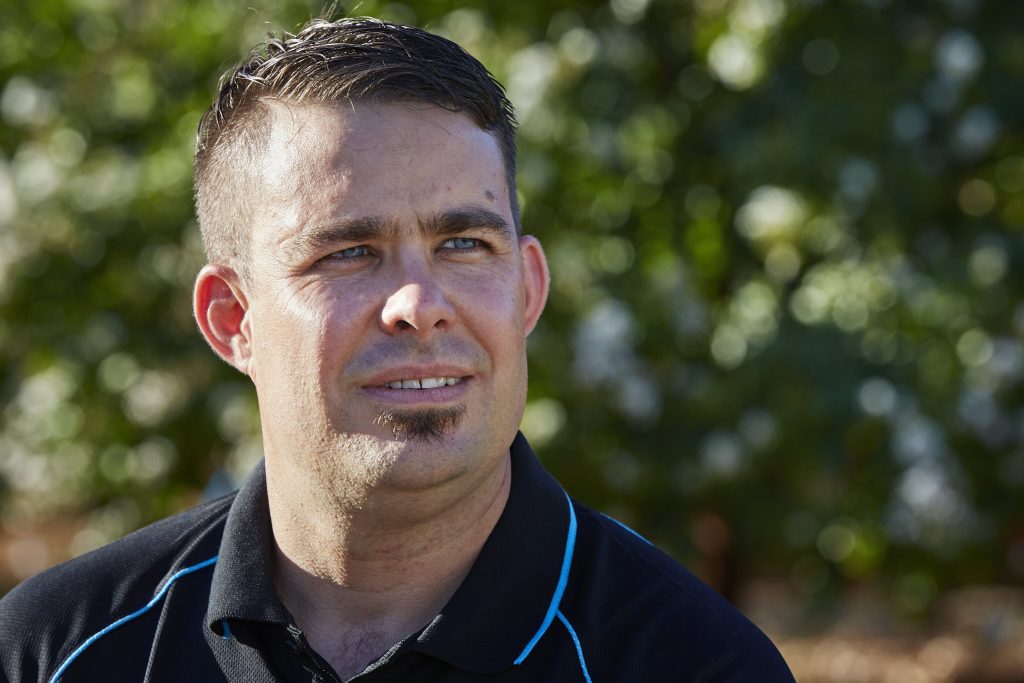Poor Solenoid Locations: Every Irrigation Repairman has experienced the pain of trying to locate and repair leaking solenoid valves below paving or under the root ball of a tree. It’s far more common than you think, and rectifying this can be both time-consuming and expensive!
To avoid damage to solenoid valves and pipes, and for ease of maintenance, solenoid valves should be located in an area clear of trees, walls, paving, concrete etc. – ideally in a garden bed. Your valves should be placed in a bank, known as a ‘manifold’, and protected with an access cover called a valve box. There should be room between fittings to allow for valves to be replaced if they ever fail, and its best practice to allow room for additional valves if another zone is ever required in future.
A good designer is going to make provision for this when designing your landscaping and note the proposed manifold location on your plans. Many times we have seen designs with little to no space left for a solenoid manifold, and this can lead to some inexperienced installers placing valves in poor locations such as close to a tree or even underneath paving and concrete!
Incorrect Plant Groupings: Some plants go together like wine and cheese, and the best plant combinations can look absolutely stunning. But it’s important for designers to ensure that plants in the same bed have similar soil, light and watering requirements. It’s not really possible to water one plant more or less than the others that are in close proximity. Flood bubblers or rings of dripline can be used to provide extra water to thirsty trees, but the immediate area around the trees will still become saturated and any plants sensitive to wet feet can die.
A great example of this is Xanthorrhoea Preissii, commonly known as the Grass Tree. These iconic native trees are usually quite an expensive feature plant because they are so slow growing – they only grow around 1cm per year, so a 1m tall tree can be as much as 100 years old! Care must be taken with Xanthorrhoea Preissii because they are very sensitive to overwatering and whatever plants are selected for around their base should be suitably drought tolerant. If misaligned, either your grass tree or the surrounding plants are going to suffer.
So if care is not taken to carefully select plant groupings during the design stage it can put your irrigation installer in the impossible position of needing to over or under-water some plants to give the right amount to others.
Forgetting to Pre-lay: Pre-lays are larger pipes or conduits that are installed prior to laying down ‘hardscapes’ like concrete, paving, footings and other ‘difficult to lift’ materials like synthetic grass. Pre-lays allow your retic pipes and wiring to be run to garden areas that would otherwise be inaccessible – such as from one side of your driveway to the other. Lack of planning here can have serious consequences because, without pre-lays underneath your concrete driveway, you’re left with very little option for getting water to the other side.
Your landscape designer should be noting pre-lay locations on their plans. Our recommendation is to use 100mm DWV sleeves for your pre-ays, and below surfaces like concrete and walls we recommend running ‘Blue Line’ HDPE pipe through these sleeves for added protection. Blue Line is far stronger and less prone to leaks than regular PVC, and comes in long rolls, so can be installed without any joins below the concrete. All this greatly reduces the chance of leaks and protects your system for the long term.
Pipes under Concrete: Lack of direction by your designer can also lead to the carnal sin of irrigation installation – unprotected pipes below the concrete. Most irrigation pipes such as PVC and poly pipes are not rated for installation directly underneath concrete. They can develop leaks that can damage your concrete or structures and are all but impossible to access for repairs.
At the very minimum these pipes should be in a sleeve, as we previously highlighted above. That way any leaking water will run out either side and prevent damage to your expensive hardscapes. The damaged pipes can also be replaced by running new lines through the sleeve, allowing for the issue to be rectified.
We also recommend going a step further and converting all pipes to Blue Line whenever they run below concrete or hardscapes – saving you the time and stress of the pipes in your sleeves developing leaks in the first place.
The practice of running retic pipes directly below hardscapes without a sleeve is extremely irresponsible, and in our opinion, downright criminal on the part of any landscaper who engages in it. Sadly, it is very common and unsuspecting homeowners can be left with a ticking time bomb below their concrete, expensive natural stone flooring or even walls.
This is why all designers should specify and highlight the importance of pre-lays on their landscape design plans. Too often critical elements like this are either assumed or left up to chance by designers and this can leave homeowners in the dark when selecting the right installer and during the installation of their landscaping.

